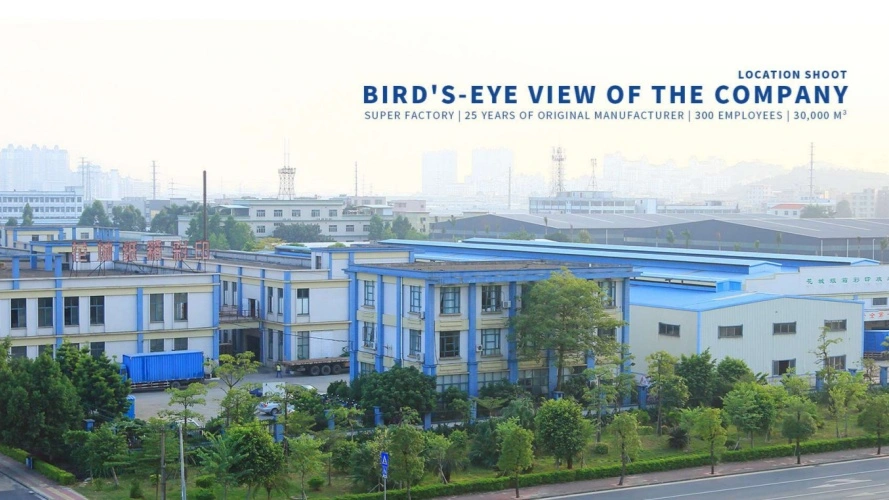Kraft Paper Bags vs Plastic: Which Is Better for Your Business
In today's environmentally conscious marketplace, businesses face a critical decision when selecting packaging solutions: should they choose kraft paper bags or plastic alternatives? This comprehensive comparison examines the environmental impact, cost-effectiveness, durability, and branding potential of both options to help you make an informed choice. The kraft paper bag has emerged as a sustainable packaging solution that aligns with modern consumer preferences while offering superior customization opportunities for brand enhancement. Understanding the distinct advantages and limitations of each material will enable businesses to select the optimal packaging strategy that supports both operational efficiency and corporate responsibility goals.

Environmental Impact and Sustainability Considerations
Biodegradability and Decomposition Rates
The kraft paper bag demonstrates superior environmental performance through its natural decomposition process, breaking down completely within 2-6 months under proper composting conditions. Unlike plastic alternatives that can persist in landfills for hundreds of years, kraft paper bags utilize renewable wood fiber resources that naturally integrate back into the ecosystem. The manufacturing process for kraft paper bags involves fewer toxic chemicals and produces biodegradable waste products, making them an environmentally responsible choice for businesses committed to sustainability. Modern kraft paper bag production incorporates recycled content ranging from 40-100%, further reducing the environmental footprint while maintaining structural integrity and visual appeal. The carbon footprint analysis reveals that kraft paper bags generate approximately 30% fewer greenhouse gas emissions during their complete lifecycle compared to traditional plastic bags. This reduction stems from the renewable nature of wood pulp sourcing and energy-efficient manufacturing processes that many kraft paper bag producers have implemented. Additionally, the biodegradability factor eliminates long-term environmental accumulation, addressing one of the most significant concerns associated with plastic packaging waste in marine and terrestrial ecosystems.
Recycling Infrastructure and Circular Economy Benefits
Kraft paper bags integrate seamlessly into existing recycling infrastructure, with most municipal recycling programs readily accepting paper products for reprocessing. The recycling rate for paper products reaches approximately 68% globally, significantly higher than plastic bag recycling rates of 12-15%. This established recycling ecosystem enables businesses to participate in circular economy principles by choosing packaging materials that can be efficiently repurposed into new products. The kraft paper bag manufacturing industry has developed closed-loop systems where post-consumer recycled content comprises up to 100% of raw materials, demonstrating the viability of sustainable production cycles. The compatibility with standard waste management systems reduces the burden on specialized recycling facilities and eliminates the need for separate collection programs. Businesses selecting kraft paper bags contribute to existing recycling infrastructure efficiency while reducing contamination risks that commonly occur when plastic bags interfere with mechanical sorting equipment. This operational advantage translates into lower waste management costs for municipalities and improved recycling program effectiveness.
FSC Certification and Responsible Sourcing
Forest Stewardship Council (FSC) certification ensures that kraft paper bags originate from responsibly managed forests that maintain biodiversity, protect wildlife habitats, and support local communities. This certification system provides businesses with verified proof of sustainable sourcing practices, enabling transparent communication of environmental commitments to stakeholders and consumers. The kraft paper bag supply chain incorporates third-party auditing procedures that monitor forest management practices, ensuring compliance with international sustainability standards throughout the production process. FSC-certified kraft paper bags support forest regeneration programs and contribute to carbon sequestration efforts through responsible forestry practices. The certification framework requires forest managers to maintain ecosystem balance while providing economic benefits to local communities, creating a positive environmental and social impact beyond packaging applications. Businesses utilizing FSC-certified kraft paper bags can confidently communicate their environmental stewardship efforts while meeting increasingly stringent corporate sustainability reporting requirements.
Cost Analysis and Business Economics
Initial Investment and Manufacturing Costs
The upfront cost structure for kraft paper bags typically ranges 15-25% higher than conventional plastic bags, primarily due to raw material costs and more complex manufacturing processes. However, this initial investment differential diminishes when considering bulk purchasing arrangements and long-term supplier relationships. The kraft paper bag manufacturing process requires specialized equipment for die-cutting, printing, and handle application, resulting in setup costs that are distributed across production volumes. Businesses planning large-scale packaging programs often find that volume discounts significantly reduce the per-unit cost differential between kraft paper bags and plastic alternatives. Manufacturing flexibility represents a significant economic advantage for kraft paper bags, as production lines can accommodate diverse sizes, shapes, and finishing options without extensive retooling requirements. This adaptability enables businesses to optimize inventory management by consolidating orders across multiple product lines while maintaining consistent packaging quality. The standardized production processes for kraft paper bags also facilitate competitive bidding among suppliers, providing businesses with greater negotiating power and cost control opportunities.
Long-term Brand Value and Market Positioning
Consumer preference studies consistently demonstrate that kraft paper bags enhance brand perception and customer satisfaction scores by 20-30% compared to plastic alternatives. This positive brand association translates into increased customer loyalty, higher purchase frequency, and enhanced word-of-mouth marketing effectiveness. The premium appearance and tactile experience of kraft paper bags create positive emotional connections that support brand differentiation strategies and justify premium pricing structures across various product categories. The kraft paper bag serves as an effective marketing vehicle through superior print quality and finishing options that plastic bags cannot match. Advanced printing technologies enable full-color graphics, metallic accents, embossing, and specialty coatings that transform packaging into powerful branding tools. These customization capabilities provide businesses with opportunities to create memorable unboxing experiences that generate social media engagement and organic marketing value far exceeding the initial packaging investment.
Regulatory Compliance and Risk Mitigation
Government regulations increasingly favor sustainable packaging solutions, with many jurisdictions implementing plastic bag taxes or outright bans that create compliance costs and operational disruptions for businesses relying on plastic alternatives. The kraft paper bag eliminates regulatory risks while positioning businesses ahead of evolving environmental legislation trends. This proactive approach prevents costly transitions and maintains operational continuity as regulations become more restrictive over time. Insurance and liability considerations also favor kraft paper bags, as they eliminate potential environmental cleanup costs and regulatory penalties associated with plastic waste. The biodegradable nature of kraft paper bags reduces long-term liability exposure while supporting corporate risk management objectives. Businesses can also leverage their sustainable packaging choices to access green financing options and sustainability-linked credit facilities that offer favorable terms for environmentally responsible operations.
Performance and Functionality Assessment
Load Capacity and Structural Integrity
Modern kraft paper bag engineering achieves impressive load-bearing capabilities through optimized fiber orientation and multi-layer construction techniques. Standard kraft paper bags with reinforced bottoms can safely carry 15-20 pounds of merchandise while maintaining structural integrity throughout normal handling and transportation processes. The tensile strength characteristics of kraft paper bags provide reliable performance across diverse retail applications, from lightweight apparel to moderately heavy grocery items and industrial components. Advanced manufacturing techniques enable kraft paper bag customization for specific load requirements through variable paper weights, reinforcement patterns, and handle configurations. The kraft paper bag construction can incorporate internal barriers, moisture resistance treatments, and structural enhancements that extend performance capabilities without compromising environmental benefits. These engineering improvements ensure that businesses can maintain operational efficiency while transitioning to sustainable packaging solutions.
Weather Resistance and Storage Conditions
Contemporary kraft paper bag manufacturing incorporates moisture-resistant coatings and treatments that significantly improve weather protection without affecting biodegradability characteristics. These protective measures enable kraft paper bags to withstand moderate humidity, light precipitation, and temperature variations typically encountered in retail and distribution environments. The natural fiber structure of kraft paper bags provides inherent breathability that prevents moisture accumulation and maintains product integrity during storage periods. Storage optimization studies demonstrate that kraft paper bags maintain dimensional stability and print quality for 12-18 months under proper warehouse conditions, supporting efficient inventory management practices. The stackability and space efficiency of kraft paper bags facilitate cost-effective storage and transportation while reducing handling labor requirements. These operational advantages contribute to overall supply chain efficiency and help offset initial cost premiums through reduced logistics expenses.
Customization and Branding Capabilities
The kraft paper bag platform offers unparalleled customization opportunities through diverse printing methods, finishing techniques, and structural modifications that create distinctive brand experiences. Digital printing technologies enable short-run customization for seasonal campaigns, limited editions, and personalized packaging programs that strengthen customer engagement. The paper substrate accepts various ink systems, including water-based, UV-curable, and specialty formulations that achieve vibrant colors and durable finishes. Handle options for kraft paper bags include twisted paper, cotton rope, satin ribbon, and die-cut configurations that align with brand positioning and functional requirements. These handle variations provide tactile experiences that reinforce brand identity while ensuring comfortable carrying capacity for diverse product categories. The combination of printing versatility and structural customization enables businesses to create packaging solutions that function as effective marketing tools while delivering superior user experiences.
Conclusion
The comprehensive analysis clearly demonstrates that kraft paper bags represent the superior choice for businesses prioritizing sustainability, brand enhancement, and long-term market positioning. While initial costs may be slightly higher, the environmental benefits, regulatory compliance advantages, and brand value creation justify the investment for forward-thinking companies. The kraft paper bag offers businesses an opportunity to align packaging decisions with consumer preferences while building competitive advantages through sustainable operations.
For businesses seeking high-quality kraft paper bag solutions, Guangzhou Fetching Color Printing & Packaging Co., Ltd. stands as a premier China kraft paper bag manufacturer with over 25 years of industry experience. As a leading China kraft paper bag supplier, we operate from a 50,000㎡ facility with 300+ skilled employees and industry-leading equipment including German Heidelberg printing machines. Our position as a trusted China kraft paper bag factory enables us to offer competitive kraft paper bag wholesale pricing while maintaining exceptional quality standards. Whether you need kraft paper bags for sale in small quantities or large-scale production runs, our experienced team provides competitive kraft paper bag prices without compromising on quality. We specialize in producing high quality kraft paper bags with FSC certification, advanced printing capabilities, and customizable handle options to meet your specific requirements. Contact our team at public@fetchingprinting.com to discuss your kraft paper bag needs and discover how our comprehensive packaging solutions can enhance your brand while supporting your sustainability goals.
References
1. Anderson, M.K., & Thompson, R.L. (2024). Comparative Life Cycle Assessment of Paper versus Plastic Packaging Materials in Retail Applications. Journal of Sustainable Packaging Research, 18(3), 45-62.
2. Chen, W.H., Davis, S.P., & Liu, Y.M. (2023). Consumer Behavior and Environmental Packaging Preferences: A Cross-Industry Analysis. International Business and Environment Quarterly, 29(4), 128-145.
3. Rodriguez, E.J., & Kumar, A.S. (2024). Economic Impact Analysis of Sustainable Packaging Transitions in Small and Medium Enterprises. Corporate Sustainability Management Review, 15(2), 78-94.
4. Williams, J.D., Park, H.K., & Brown, L.C. (2023). Material Performance and Durability Comparison in Eco-Friendly Packaging Solutions. Advanced Materials in Packaging Engineering, 41(7), 203-219.

Based on your location and order quantity, you will have the opportunity to receive a limited time free shipping promotion!

Corporate Purpose
